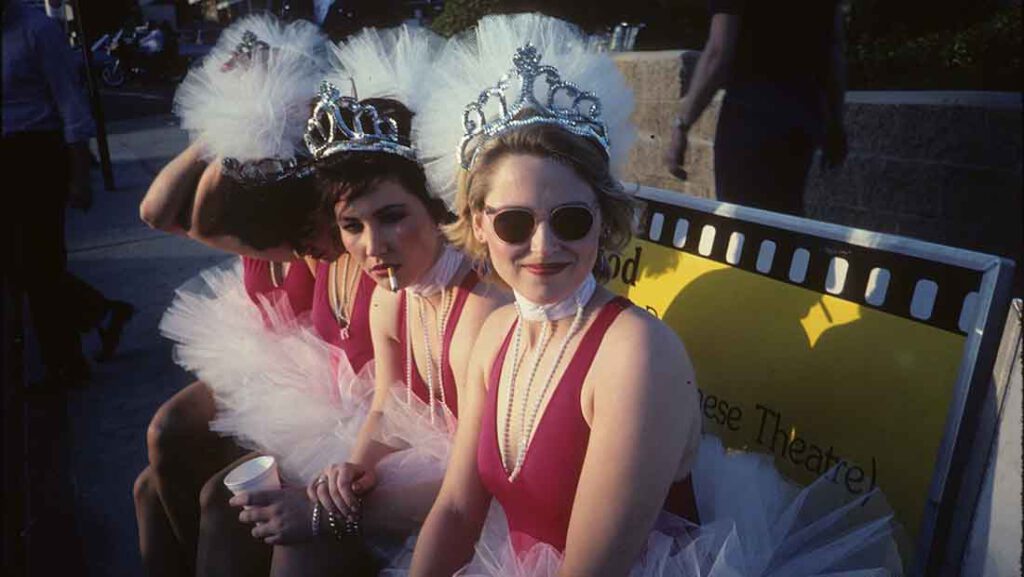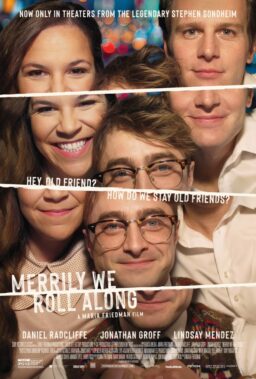Pop culture docs are a common trend at Sundance. We all love to learn a little bit more about where our favorite art comes from, whether that art is incredible music, groundbreaking television, or award-winning theater. In a sense, all three of these films serve this purpose in very different ways, illuminating the difficulties and complexity of great art, whether that art is punk music, animated TV, or musical theatre. While this subgenre of documentaries often succumbs to by-the-numbers filmmaking that fails in the shadow of the actual art it’s seeking to enrich, these three films work on their own terms, largely due to the empathetic approaches of their talented filmmakers.
The best of the three is Alison Ellwood’s “The Go-Go’s,” a music bio-doc that embodies the rebellious spirit of its subject, the first all-girl band that wrote their own songs to go to #1. What the director of “History of the Eagles” so deftly captures is the “lightning in a bottle” aspect of The Go-Go’s, a band that didn’t set out to light the punk and pop scenes on fire but did so largely because its members didn’t like to take no for an answer. As Belinda Carlisle says, they didn’t set out to be a feminist band, but they wanted to be a part of a punk music scene that inspired them, and their gender wasn’t about to get in the way.
Ellwood takes a chronological approach with a lot of modern interviews with all of the members, including ones who weren’t with the band as long as others. Part of the charm of “The Go-Go’s” is in the group itself, all of whom are open and honest about their insecurities, strengths, and even the demons that tore the band apart. As critics, we write a lot about how talking-head documentaries falter by taking a simple approach, but the overkill in that subgenre has somewhat diminished being able to appreciate the art of the interview. Yes, this is kind of a talking-head documentary, but Ellwood gets such good material out of people like Carlisle, Jane Wiedlin, Charlotte Caffey, and, especially, Gina Schock that it transcends the simple structure. They’re likable, open, and able to now put their success and the entire ‘80s punk/pop scene in context in a way that’s entertaining and informative. And I dare you not to want to listen to “We Got the Beat” when it’s over.

A much darker story emerges in Ron Cicero & Kimo Easterwood’s “Happy Happy Joy Joy,” the story of one of the best cartoons of all time, the innovative and breakthrough world of “Ren & Stimpy”. The twisted tale of a dog and cat became more than just a cult hit, redefining what was allowed in children’s animation. You san see the fingerprints of its creator, John Kricfalusi, all over the animated landscape in 2020, particularly in the daringly bizarre sense of humor in shows like “The Adventures of Gumball” and “Regular Show”. When it comes to modern animation, few people are as important as those who made “Ren & Stimpy,” and the first half of “Happy Happy Joy Joy” captures what made these artists so special.
Of course, anyone with even passing knowledge of the story of “Ren & Stimpy” knows there’s a much darker side to this history, and Cicero and Easterwood eventually gets there. To be fair, they allow their interview subjects to detail the authoritarian, abusive, egocentric control of Kricfalusi over his show throughout the film. To put it kindly, he was not easy to work with, and modern interviews with his collaborators and John K. himself reveal awful working conditions and downright insane behavior with nearly everyone around him. “Happy Happy Joy Joy” is a story of immense creativity destroyed by the ego of one man. And then it becomes even more tragic when the story of Kricfalusi’s disturbing behavior with young women, which came to light over the last few years. He’s a predator, and he’s remarkably apologetic and accepting of his errors when “HHJJ” gets to that chapter, even if it does so a bit too late in a film that feels too long already. Ultimately, fans of Ren & Stimpy will walk away from “Happy Happy Joy Joy” with the complex feelings they likely had about it when they went in. Can great art be created by a monster? We’ve seen it before, we’ll see it again. “Happy Happy Joy Joy” is sadly just another interesting chapter in this very long book.

“Siempre, Luis” is a very different kind of artist biopic in that it’s more the story of the father of a household name than the artist himself. What makes this approach interesting is not just that we get to know an influential, brilliant, important man a little better, but we can see how his work ethic and genius influenced his son. One can draw a line from Luis Miranda’s passion to his son Lin-Manuel Miranda that results in the game-changing Hamilton. Luis Miranda was always in the room where it happened. Rather than just produce a by-the-numbers bio-doc of Lin-Manuel Miranda, John James makes him a secondary character in the life story of his father, Luis. The creator of Hamilton may be the name you know going in, but it is father that you’ll remember after “Siempre, Luis.”
Luis A. Miranda Jr. was a fixture in the Latinx community in New York City in the ‘70s and ‘80s. He was a leader for his people who became a major liaison between them and the political structure after working for Mayor Ed Koch as the Director of Hispanic Affairs, even helping later get Chuck Schumer elected. “Siempre, Luis” alternates between footage of Miranda helping his son get a version of Hamilton staged in Puerto Rico after the hurricane and his life story. The picture that emerges is of an incredibly hard worker – arguably too much so given his health conditions – but someone with undeniably well-placed priorities and ambition. Luis Miranda never took easy routes and never backed down from a challenge – two things that he clearly passed along to his son. Yes, “Siempre, Luis” is a simple doc when it comes to filmmaking, but it’s engaging in the way it tells the story of a man who should be better known nationally without being distracted by the star power of his son. You’ll walk away inspired to work harder, if just for the example it sets for your children, and how that example could lead them to accomplish greatness someday.












